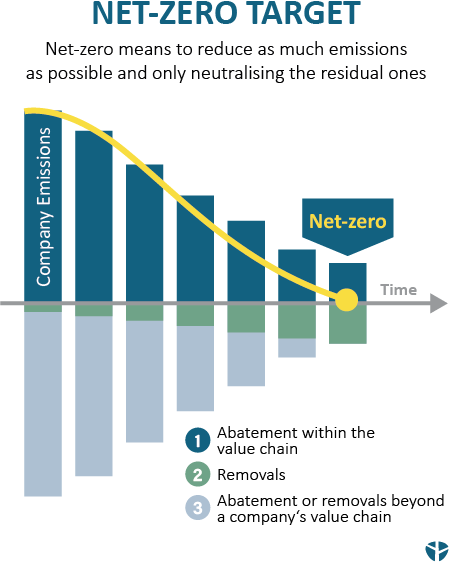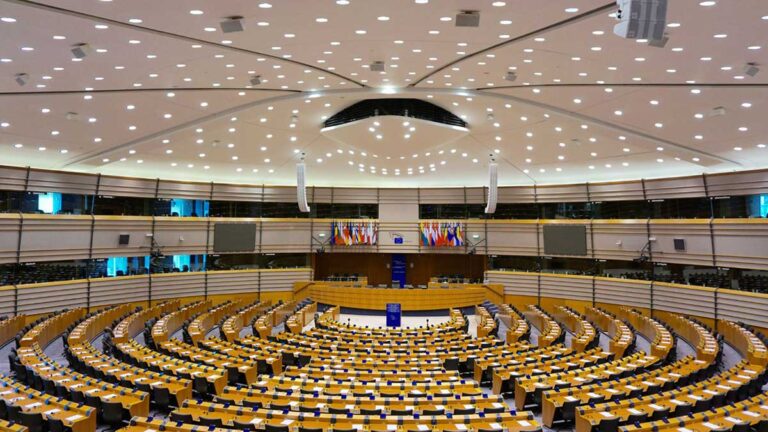FAQ
Frequently asked questions on Net Zero
What does Net Zero mean?
Net Zero is a state where no incremental greenhouse gases are added to the atmosphere. This means achieving a balance between the 10-20% GHG emissions that may remain after all mitigation measures have been implemented, and the absorption and thus removal of these emissions by technical or biological processes from the air.
Why is carbon neutrality not enough?
Why should your business develop a Net Zero strategy?
Due to the high amount of GHG emissions, our climate is changing rapidly. Global warming is taking its course. Mitigating climate change can only succeed if everyone contributes to the reduction targets. At the same time, there is increasing pressure on companies to manage their emissions. By defining and following a Net Zero strategy, you are taking the right steps to become a Net Zero company and be in line with regulatory requirements.
How can Net Zero emissions be achieved?
How can CO2 offsetting certificates be used for your Net Zero targets?
To achieve Net Zero, businesses are required to achieve emissions reductions of 80-90% of emissions and neutralize the remaining 10-20% via carbon removals that sequester carbon (CO2) from the atmosphere and store them for the long term. It is important to note here that the classic “offset certificates”, which theoretically avoid CO2 emissions elsewhere (electric cook stove in Africa, investments in wind farms, etc.) are not eligible. Removal projects actively remove carbon from the atmosphere in a technical way (“direct air capture”) or in a biological way (afforestation, sequestration, etc.) and store the carbon in the long term over a period of >100 years. There are still very few of these projects, and standards for them are still being developed in many areas.
What is the difference between Net Zero, carbon neutrality and climate neutral?
Net Zero, carbon or CO2 neutral get mixed up frequently. Carbon or CO2 neutrality only covers carbon emissions and excludes any other GHGs. Climate neutral would scientifically mean that other climate-impacting effects, such as albedo, are considered in addition to all greenhouse gas emissions.
In addition, the term neutrality is not clearly regulated by any standard and can mean that no emissions were reduced, and only offset certificates purchased to achieve neutrality. Net Zero, on the other hand, is clearly defined by SBTi and means that 80-90% of emissions must be reduced.
denkstatt therefore recommends transparent and ambitious target formulations. Here are a few possible examples:
- “Net Zero CO2 emissions (Scope-1-2-3) by 2040.”
- “Net Zero greenhouse gas emissions (Scope-1-2) by 2030”
- “-42% CO2 emissions (Scope-1-2-3) by 2030″
How can carbon reduction be considered holistically with other environmental impacts of my organization?
The reduction of Scope 1 emissions and Scope 2 emissions is a technical challenge that can be solved by most companies with existing technologies at little additional cost and sometimes even cost savings. Scope 3 emissions are a strategic challenge that must be considered holistically. For this holistic approach, Life Cycle Assessment and Circular Economy have an enormous potential to reduce emissions, while avoiding adverse effects on water consumption, biodiversity, and resource consumption. To address this complexity why we recommend conducting Life Cycle Assessments (LCAs) on products and services in order to not only identify the CO2 reduction levers along the value chain, but also to identify and address interactions with other environmental impacts (biodiversity, water consumption, resource use, etc.), and find a holistically sustainable solution.





